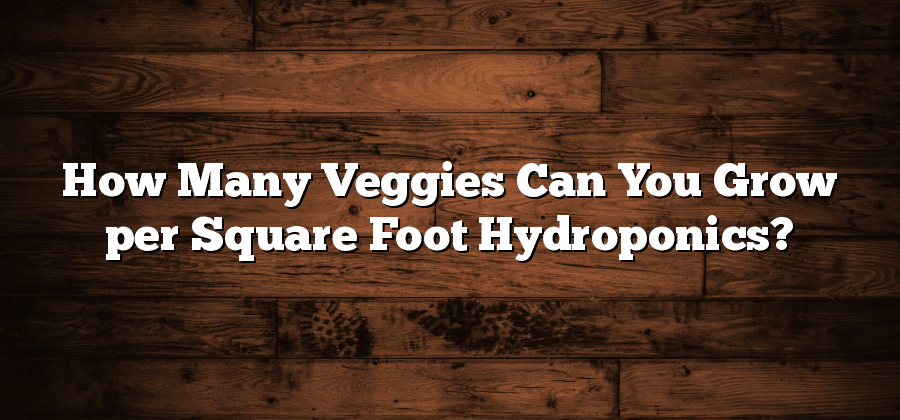Understanding Hydroponics and its Advantages
Hydroponics is a modern and innovative method of growing plants without soil. Instead of relying on traditional soil-based systems, hydroponics utilizes nutrient-rich water as a growing medium. This technique has gained popularity among both commercial growers and hobbyists due to its numerous advantages.
First and foremost, hydroponics allows for optimal control over the growing conditions. By closely monitoring and adjusting nutrient levels, pH levels, and water availability, growers can provide plants with precisely what they need for optimal growth. This level of control leads to faster and healthier plant development, resulting in higher yields and better quality produce. Additionally, hydroponics eliminates the risks associated with soil-based gardening, such as pests, diseases, and weeds, as the absence of soil reduces the likelihood of these issues occurring. Moreover, because hydroponics systems are typically indoors or in controlled environments, growers can extend the growing season all year round and are not reliant on weather conditions. This leads to increased productivity and consistent harvests, regardless of the external climate.
Maximizing Yield with Square Foot Gardening
Square foot gardening is a popular and efficient technique used by many gardeners to maximize yield in a limited space. This method involves dividing the garden into small, individual square sections, allowing for precise planting and efficient use of resources. By carefully planning and arranging crops within each square foot, gardeners can cultivate a diverse range of vegetables in a small area, resulting in higher yields and reduced wastage.
One of the key advantages of square foot gardening is its ability to minimize competition among plants. By providing each plant with its own designated space, the risk of overcrowding is greatly reduced. This allows plants to grow and develop without being hindered by neighboring plants. Additionally, the close proximity of the plants in square foot gardening creates a microclimate that can help to retain moisture and provide shelter from extreme weather conditions. Overall, square foot gardening offers an effective and organized approach to maximizing yield, making it an ideal choice for both beginner and experienced gardeners alike.
Optimal Plant Spacing for Hydroponic Systems
Plant spacing plays a crucial role in hydroponic systems, as it directly impacts the overall health and productivity of your plants. Proper spacing ensures that each plant has adequate access to nutrients, water, and light, allowing them to grow optimally. In hydroponics, where plants are grown in a controlled environment without soil, understanding the ideal spacing is even more important to maximize yield.
One factor to consider when determining the optimal plant spacing is the size of the plants at maturity. Different types of vegetables have varying growth patterns, with some plants spreading out while others grow vertically. For plants that spread out, such as lettuce or herbs, it is important to provide enough space between each plant to prevent overcrowding. This ensures that each plant receives sufficient air circulation, reducing the risk of disease and promoting overall plant health. On the other hand, plants that grow vertically, such as tomatoes or cucumbers, may require support structures like trellises or stakes to prevent them from interfering with neighboring plants.
Selecting the Right Vegetables for Hydroponics
Selecting the right vegetables for hydroponics is essential in maximizing the benefits of this innovative gardening method. With hydroponics, plants are grown in a nutrient-rich water solution instead of soil, allowing for optimal growth and control over environmental factors. When choosing vegetables for hydroponics, it is important to consider their suitability for this system.
One of the key factors to consider is the plant’s size. Since the roots of hydroponic plants are directly exposed to the water solution, it is crucial to select vegetables that are compact and do not have extensive root systems. Leafy greens, such as lettuce, spinach, and kale, are excellent choices as they have shallow root systems and adapt well to hydroponic conditions. Herbs like basil and parsley are also great options due to their compact growth habit and high demand in the culinary world.
Additionally, the growth rate of the vegetables is a crucial factor for a successful hydroponic system. Fast-growing vegetables like microgreens, radishes, and baby carrots are ideal for hydroponics as they provide quicker harvests and continuous yields. On the other hand, slower-growing vegetables such as tomatoes and cucumbers may require more time and space in a hydroponic setup, but can still thrive when given the right conditions.
Techniques to Increase Vegetable Production
Hydroponic systems have become increasingly popular among farmers and gardeners looking to maximize vegetable production. One technique to increase vegetable production in hydroponics is nutrient cycling. Nutrient cycling involves providing plants with the necessary nutrients at different stages of their growth. By adjusting the nutrient levels based on the plants’ needs, growers can ensure optimal growth and yield.
Another technique to increase vegetable production in hydroponics is proper lighting. Light is an essential factor for plant growth, and having the right amount and quality of light can significantly impact vegetable production. LED lights are commonly used in hydroponic systems due to their energy efficiency and ability to provide the necessary spectra for plant growth. By adjusting the light intensity and spectrum based on the specific plant’s requirements, growers can promote better photosynthesis and ultimately increase vegetable production.
These techniques, along with other innovative methods, are helping growers achieve higher vegetable yields in hydroponic systems. By focusing on nutrient cycling and providing optimal lighting conditions, growers can create an environment that maximizes vegetable production and meets the increasing demand for fresh and sustainable produce.






